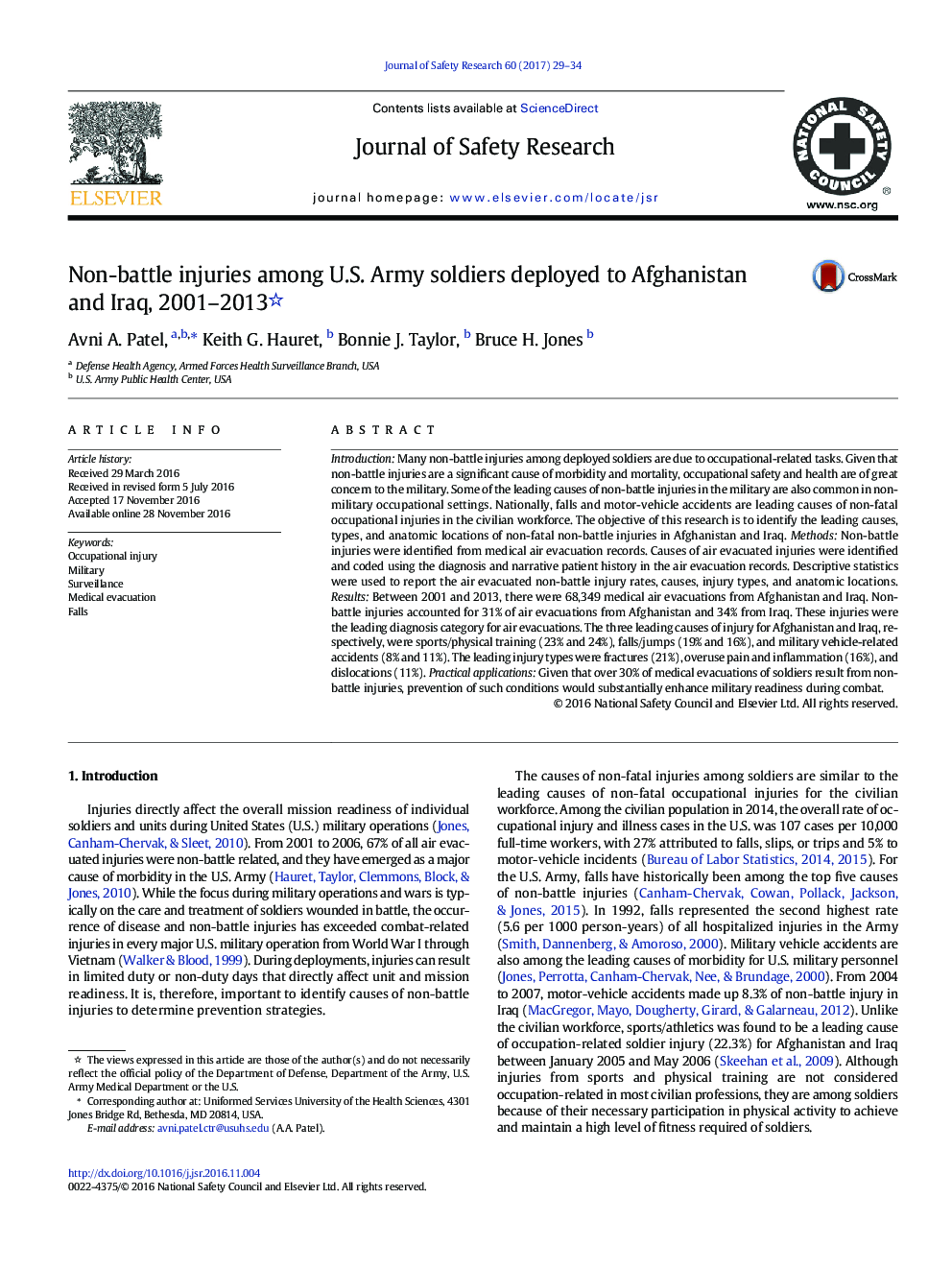| کد مقاله | کد نشریه | سال انتشار | مقاله انگلیسی | نسخه تمام متن |
|---|---|---|---|---|
| 4980586 | 1453300 | 2017 | 6 صفحه PDF | دانلود رایگان |
- Surveillance on non-battle injury incidence, causes, types, and anatomic locations
- Sports, falls, and military vehicle accidents were the three leading causes.
- Longest duration (12Â years) of surveillance reported for non-battle injuries.
- Some non-battle injuries are similar to civilian occupational injury.
IntroductionMany non-battle injuries among deployed soldiers are due to occupational-related tasks. Given that non-battle injuries are a significant cause of morbidity and mortality, occupational safety and health are of great concern to the military. Some of the leading causes of non-battle injuries in the military are also common in non-military occupational settings. Nationally, falls and motor-vehicle accidents are leading causes of non-fatal occupational injuries in the civilian workforce. The objective of this research is to identify the leading causes, types, and anatomic locations of non-fatal non-battle injuries in Afghanistan and Iraq.MethodsNon-battle injuries were identified from medical air evacuation records. Causes of air evacuated injuries were identified and coded using the diagnosis and narrative patient history in the air evacuation records. Descriptive statistics were used to report the air evacuated non-battle injury rates, causes, injury types, and anatomic locations.ResultsBetween 2001 and 2013, there were 68,349 medical air evacuations from Afghanistan and Iraq. Non-battle injuries accounted for 31% of air evacuations from Afghanistan and 34% from Iraq. These injuries were the leading diagnosis category for air evacuations. The three leading causes of injury for Afghanistan and Iraq, respectively, were sports/physical training (23% and 24%), falls/jumps (19% and 16%), and military vehicle-related accidents (8% and 11%). The leading injury types were fractures (21%), overuse pain and inflammation (16%), and dislocations (11%).Practical applicationsGiven that over 30% of medical evacuations of soldiers result from non-battle injuries, prevention of such conditions would substantially enhance military readiness during combat.
Journal: Journal of Safety Research - Volume 60, February 2017, Pages 29-34
